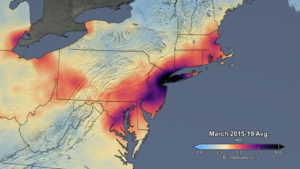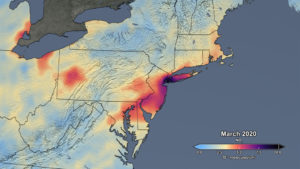Freshkills Grasslands: Good for the Birds, Good for the Climate
As we celebrate the 20th anniversary of Earth Day, we are thinking about climate change and what we can do to alter its course and mitigate its impacts. One surprising result of the current Covid-19 pandemic is that we are seeing some of the changes that can happen relatively quickly from a drastic reduction in our carbon emissions. In China, carbon emissions were down 18% from early February to mid-March, and energy-related carbon emissions are expected to fall by at least 5.4% this year alone. Along with this reduction in emissions has come a reduction in air pollution, with levels dropping 30% in major Northeast US cities. Of course, it should go without saying that a global health pandemic is not a good strategy for climate change mitigation. These changes in carbon emissions and air pollution levels are coupled with the massive negative impacts of the Covid-19 virus on human health and economic stability. What these impacts do show, however, is that changes in our emissions and atmospheric carbon levels lead to surprisingly quick improvements in the health of our environment. Our actions can indeed have meaningful positive consequences. Our focus then needs to be on making sustainable strides toward reducing the level of carbon emissions in our atmosphere.
A 2018 study conducted by the Nature Conservancy and partners (Fargione et al., 2018) found that 21% of global emissions could be stored using natural climate solutions, such as land management and land restoration. This represents a reduction in carbon emissions using natural solutions that brings us one third of the way to the Paris Agreement targets by 2030, with 10% of that potential coming from the United States.
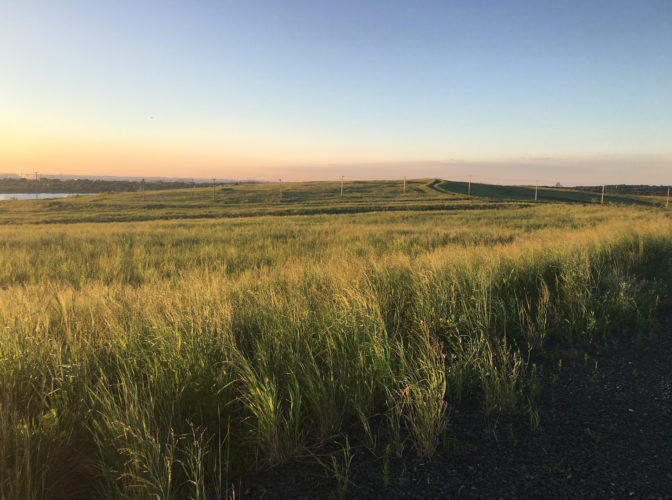
Freshkills Park’s grasslands on East Mound at sunset.
In the case of Freshkills Park, the land is a mix of extant wetlands, forests, and reclaimed grasslands. The creation of these reclaimed grasslands was enacted by NYC Sanitation as a part of landfill closure to prevent erosion of the landfill cap, but the grasslands at the Park have since become a productive ecosystem. Grasslands don’t get a lot of attention when it comes to habitat conservation, but they are the most critically endangered habitat in the world when comparing the amount of loss to the efforts to preserve them. Less than 1% of the original tallgrass prairies in northeastern North America exists today, having been replaced first by agriculture and then by housing and industrial ventures (Anderson, 2006; Samson & Knop, 1994). Freshkills Park now represents the largest grassland environment in the region, and this creation of grassland habitat has resulted in a return of grassland bird species that researchers from the College of Staten Island and NYC Parks have been studying closely. But what about the potential of Freshkills Park’s grasslands to mitigate the effects of carbon emissions and reduce climate change?
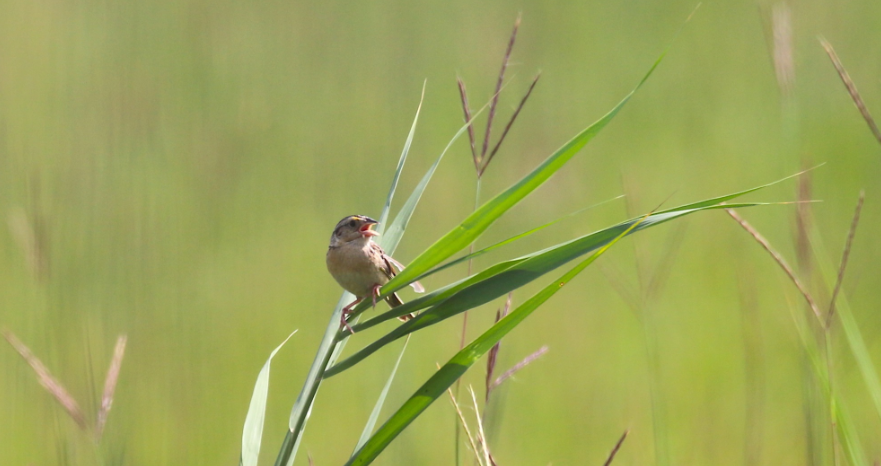
Grasshopper sparrow singing on East Mound at Freshkills Park.
Although the 2018 Nature Conservancy’s study concluded that forest-based solutions show the most potential overall (based on their ability to store carbon and the available forest restoration opportunities in the USA), grasslands store more carbon than forests because they are less impacted by droughts and fires. The closure of the former Fresh Kills Landfill will result in approximately 1,000 acres of grassland habitat, making it the largest expanse of grassland in the tri-state region. Unlike forests, which sequester most carbon in the trees themselves, grasslands sequester most carbon underground (Dass et al., 2018). In the face of ever-changing climate conditions, this makes the storage of carbon by grasslands more adaptive to climate change. For example, as forest fires become more likely, the carbon stored in the biomass of trees is at risk of being released into the atmosphere, whereas if grasslands burn the carbon remains stored underground.
The grasslands at Freshkills Park are relatively new, ranging from 22 years old to those presently being created as part of the ongoing capping of West Mound. Mature grasslands sequester more carbon than newly planted ones because mature grasslands have much deeper root systems, where the majority of grassland carbon sequestration occurs (Janowiak et al, 2017). This means that the longer that the grasslands at Freshkills Park exist, the better they will become at storing carbon and mitigating the negative effects of carbon emissions. For this reason, the continued land management of the engineered grasslands at Freshkills Park is vital for their ability to mitigate carbon emissions and be resilient in the face of our changing climate.
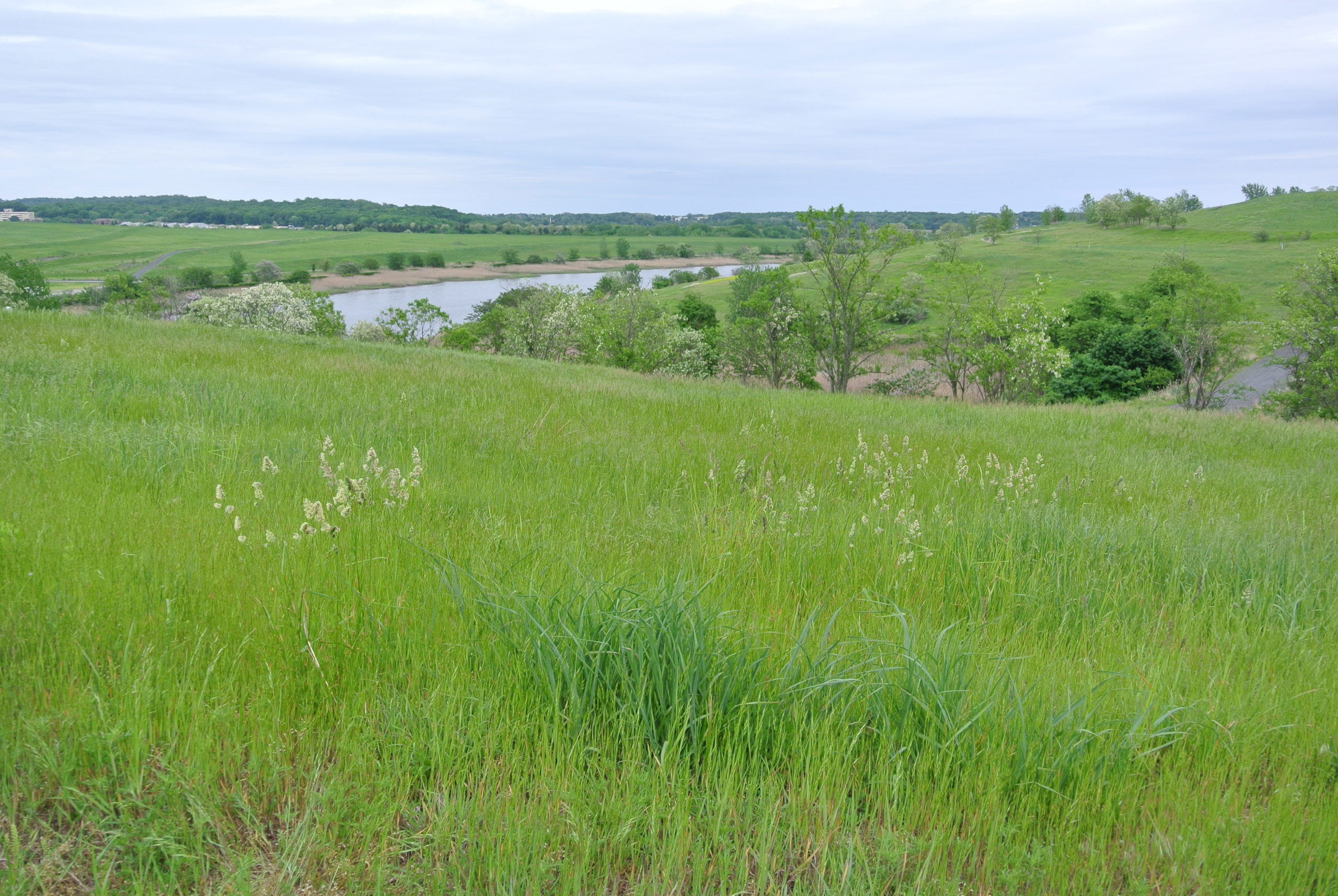
South Mound
The global pandemic crisis shows that climate change solutions do not need to be high tech, and actions we take for our environment can have meaningful results. As we celebrate Earth Week, we are focused on looking forward at the potentials we have to mitigate climate change, for the health of ourselves and our planet alike.
Upcycle your Stream time with STEAM!
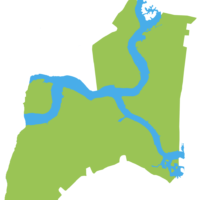 Using upcycled items for art reduces demand for new materials and waste destined for the landfill. Did anything surprise you about the threat to grasslands and their potential for climate change mitigation?
Using upcycled items for art reduces demand for new materials and waste destined for the landfill. Did anything surprise you about the threat to grasslands and their potential for climate change mitigation?
Share your thoughts on climate change and the environment this week on social media using #FreshkillsUpStream
References
Anderson, R. C. 2006. Evolution and origin of the Central Grassland of North America: climate, fire, and mammalian grazers. The Journal of Torrey Botanical Society. 133(4):626-647.
Dass, P., Houlton, B. Z., Wang, Y., & Warlind, D. (2018). Grasslands may be more reliable carbon sinks than forests in California. Environmental Research Letters, 13(7), 074027.
Fargione, J. E., Bassett, S., Boucher, T., Bridgham, S. D., Conant, R. T., Cook-Patton, S. C., & Gu, H. (2018). Natural climate solutions for the United States. Science advances, 4(11), eaat1869.
Janowiak, M., Connelly, W. J., Dante-Wood, K., Domke, G. M., Giardina, C., Kayler, Z., … & Woodall, C. W. (2017). Considering Forest and Grassland Carbon in Land Management. General Technical Report, Washington Office, 95.
Samson, F., and F. Knopf. 1994. Prairie conservation in North America. BioScience 44:418-421.

